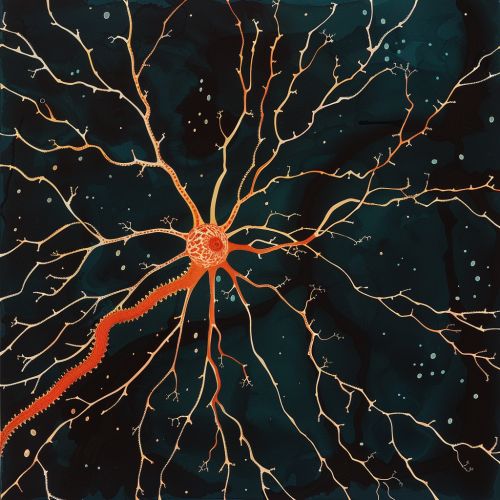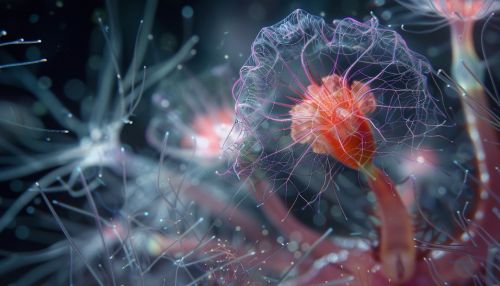Brain evolution
Introduction
The evolution of the brain is a complex and multifaceted process that has occurred over millions of years. This article delves into the intricate details of brain evolution, exploring the various stages, mechanisms, and factors that have influenced the development of the brain across different species. The study of brain evolution provides insights into the origins of cognitive functions, behaviors, and neurological structures that define various organisms, including humans.
Early Nervous Systems
The earliest forms of nervous systems can be traced back to simple organisms such as cnidarians and ctenophores. These primitive nervous systems consisted of diffuse nerve nets, which lacked centralized structures. The nerve net allowed for basic sensory and motor functions, enabling these organisms to respond to environmental stimuli.


As evolution progressed, more complex nervous systems began to emerge. The development of ganglia, clusters of nerve cells, marked a significant step in the evolution of the nervous system. Ganglia allowed for localized processing of information, leading to more efficient and coordinated responses.
Evolution of the Vertebrate Brain
The evolution of the vertebrate brain can be divided into several key stages, each characterized by significant anatomical and functional changes.
Fish
The earliest vertebrates, such as jawless fish, possessed simple brains with three primary regions: the forebrain, midbrain, and hindbrain. The forebrain was responsible for olfactory processing, the midbrain for visual and auditory processing, and the hindbrain for motor control and balance.
Amphibians
With the transition to land, amphibians developed more complex brains. The forebrain expanded to accommodate enhanced olfactory and visual processing, while the hindbrain became more specialized in coordinating limb movements.
Reptiles
Reptiles exhibited further brain specialization, particularly in the forebrain. The development of the cerebrum allowed for more advanced cognitive functions, such as spatial navigation and complex behaviors. The cerebrum's expansion was accompanied by the development of the cerebral cortex, a critical structure for higher-order processing.
Birds
Birds, descendants of reptiles, possess highly specialized brains adapted for flight and complex behaviors. The avian brain features a well-developed cerebrum and cerebellum, which are essential for motor coordination and sensory integration. The hippocampus in birds is particularly notable for its role in spatial memory and navigation.
Mammals
Mammalian brain evolution is characterized by significant enlargement and differentiation of the cerebral cortex. The neocortex, a unique structure in mammals, is responsible for higher cognitive functions such as reasoning, problem-solving, and social behaviors. The development of the corpus callosum facilitated communication between the brain's hemispheres, enhancing cognitive abilities.
Human Brain Evolution
The human brain has undergone remarkable changes over the course of evolution, leading to the development of advanced cognitive functions and complex behaviors.
Hominid Ancestors
Early hominids, such as Australopithecus, exhibited modest increases in brain size compared to their primate relatives. The expansion of the brain, particularly the frontal lobes, was associated with improved tool use, social interactions, and problem-solving abilities.
Homo Erectus
Homo erectus marked a significant milestone in brain evolution, with a substantial increase in brain size and complexity. This species demonstrated advanced tool-making skills, social structures, and the use of fire, all of which likely contributed to further brain development.
Homo Sapiens
Modern humans, Homo sapiens, possess the largest and most complex brains among primates. The human brain's neocortex is highly developed, enabling sophisticated language, abstract thinking, and cultural transmission. The prefrontal cortex, in particular, is crucial for executive functions, decision-making, and social behaviors.
Mechanisms of Brain Evolution
Several mechanisms have driven the evolution of the brain, including genetic, environmental, and social factors.
Genetic Factors
Genetic mutations and variations have played a crucial role in brain evolution. Changes in gene expression and the duplication of specific genes have led to the development of new neural structures and functions. For example, the duplication of the SRGAP2 gene is associated with the expansion of the human neocortex.
Environmental Factors
Environmental pressures, such as changes in climate, habitat, and food availability, have influenced brain evolution. Adaptations to new environments required enhanced sensory processing, motor coordination, and cognitive abilities, driving the development of more complex brains.
Social Factors
Social interactions and group living have also been significant drivers of brain evolution. The demands of social communication, cooperation, and competition have led to the development of advanced cognitive functions and larger brain sizes. The social brain hypothesis suggests that the complexity of social interactions is a primary factor in the evolution of large brains.
Comparative Neuroanatomy
Comparative studies of neuroanatomy across different species provide valuable insights into brain evolution. By examining the similarities and differences in brain structures, researchers can infer the evolutionary relationships and functional adaptations of various organisms.
Invertebrates
Invertebrates, such as arthropods and mollusks, exhibit diverse and specialized nervous systems. The brains of these organisms are adapted to their specific ecological niches and behaviors. For example, the octopus possesses a highly developed brain with advanced problem-solving abilities and complex behaviors.
Vertebrates
Vertebrate brains share a common basic structure but exhibit significant variations in size, complexity, and specialization. Comparative studies of vertebrate brains, from fish to mammals, reveal the evolutionary trends and adaptations that have shaped brain development.
Brain Size and Intelligence
The relationship between brain size and intelligence has been a topic of considerable interest and debate. While larger brains are generally associated with higher cognitive abilities, brain size alone is not a definitive measure of intelligence.
Encephalization Quotient
The encephalization quotient (EQ) is a measure of brain size relative to body size. Species with higher EQs, such as humans and dolphins, tend to exhibit more complex behaviors and cognitive functions. However, EQ is not the sole determinant of intelligence, as other factors, such as neural connectivity and brain organization, also play crucial roles.
Neural Connectivity
The density and complexity of neural connections, or synapses, are critical for cognitive functions. Species with highly interconnected brains, such as primates and cetaceans, demonstrate advanced problem-solving abilities, social behaviors, and communication skills.
Brain Plasticity and Evolution
Brain plasticity, the ability of the brain to change and adapt in response to experiences, is a key factor in brain evolution. Plasticity allows for the development of new neural connections and the modification of existing ones, enabling organisms to adapt to changing environments and challenges.
Developmental Plasticity
During development, the brain undergoes significant changes in response to genetic and environmental influences. Developmental plasticity allows for the fine-tuning of neural circuits and the optimization of brain functions based on individual experiences.
Adult Plasticity
Even in adulthood, the brain retains a degree of plasticity, allowing for learning, memory formation, and adaptation to new experiences. Adult plasticity is particularly important for species with complex social structures and behaviors, as it enables continuous adaptation and learning throughout life.
Future Directions in Brain Evolution Research
The study of brain evolution is an ongoing and dynamic field, with new discoveries and technologies continually advancing our understanding. Future research directions include:
Genomic Studies
Advances in genomic technologies, such as CRISPR and whole-genome sequencing, are providing new insights into the genetic basis of brain evolution. By identifying and manipulating specific genes, researchers can investigate their roles in brain development and function.
Comparative Neuroscience
Comparative neuroscience, which involves the study of brain structures and functions across different species, continues to be a valuable approach for understanding brain evolution. Emerging techniques, such as connectomics and neuroimaging, are enabling more detailed and comprehensive comparisons of neural circuits and networks.
Evolutionary Developmental Biology
Evolutionary developmental biology, or evo-devo, explores the interplay between genetic and developmental processes in shaping brain evolution. By studying the developmental pathways and mechanisms that give rise to neural structures, researchers can gain insights into the evolutionary origins and diversification of brains.
